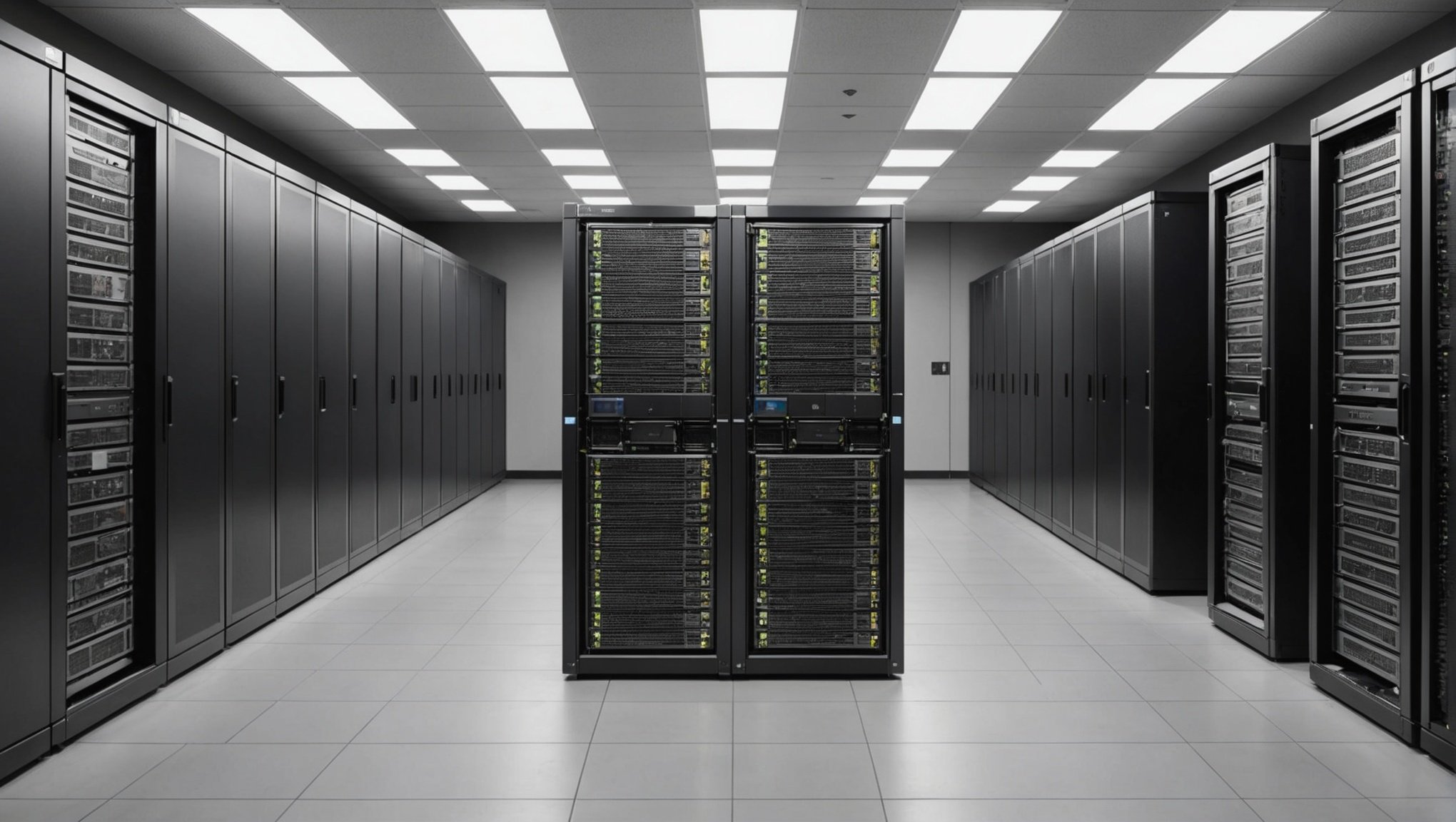Extend the life of your data centre IT assets

Maintaining the longevity of your data center's IT assets requires more than quick fixes and reactive measures. It's about implementing strategic asset management practices that enhance performance and reduce costs. From regular maintenance routines to proactive hardware checks, effective IT Asset Management (ITAM) ensures optimal utilization and extended lifespan of your technology. This comprehensive guide will walk you through actionable tactics and best practices, empowering you to maximize the value and durability of your data center investments, while boosting operational efficiency and sustainability.
Importance of IT Asset management
Effective IT asset lifecycle management is crucial for maximizing the value and efficiency of IT resources. By tracking and managing assets from acquisition to disposal, organizations can ensure optimal performance and cost-effectiveness.
Cela peut vous intéresser : What Are the Effective Branding Techniques for British Craft Beers in the European Market?
ITAM overview and significance
ITAM encompasses the comprehensive tracking and management of IT assets. This includes both hardware, such as servers and desktops, and software licenses and subscriptions. Maintaining an accurate inventory and monitoring each asset's lifecycle allows businesses to maximize their investment value and minimize operational risks.
Benefits of effective ITAM
Implementing robust ITAM practices offers numerous benefits:
Lire également : What Are the Key Factors for Successfully Marketing a New Tech Product in Manchester?
- Cost Reduction: Accurate asset tracking helps avoid unnecessary purchases and optimize existing resources.
- Improved Compliance: Keeping software licenses up-to-date helps avoid legal issues and penalties.
- Enhanced Security: Regular monitoring and maintenance reduce the risk of security breaches and data loss.
Key components of ITAM
Several key components contribute to a successful ITAM strategy:
- Inventory Management: Detailed records of all IT assets, including their status and location.
- Asset Tracking: Technologies like barcodes or RFID to monitor assets in real-time.
- Lifecycle Management: Managing each phase of an asset’s life to extend its usability and value.
- Vendor Management: Building relationships with vendors to secure better contracts and support.
- Software License Management: Ensuring compliance and avoiding overspending by actively managing licenses.
- Risk Management: Implementing security protocols and conducting regular risk assessments.
By focusing on these components, organizations can effectively manage their data center assets maintenance and extend the life of their data centers. This holistic approach not only optimizes the use of IT resources but also supports strategic decision-making and operational efficiency.
Strategies to extend IT Asset lifespan
Extending the technology lifespan of IT assets is a priority for organizations aiming to maximize their investments. Implementing lifecycle extension tactics not only reduces costs but also enhances operational efficiency.
Regular maintenance practices
Regular maintenance is fundamental in increasing IT asset longevity. This includes routine software updates, hardware checks, and system diagnostics. By addressing minor issues promptly, significant failures can be prevented, ensuring that assets remain functional for longer periods.
Proactive hardware maintenance
Proactive maintenance involves anticipating potential problems before they occur. Techniques such as predictive analytics can identify signs of wear and tear, allowing for timely interventions. This approach not only extends the technology lifespan but also minimizes downtime.
Lifecycle management techniques
Effective lifecycle management is crucial for extending technology lifespan. This includes planning for each stage of an asset's life, from acquisition to disposal. By implementing a structured approach, organizations can optimize asset use and ensure timely upgrades or replacements.
Incorporating these strategies into ITAM practices will significantly contribute to increasing IT asset longevity and maintaining a robust IT infrastructure.
Optimizing Server and Hardware Performance
Optimizing server and hardware performance is essential for extending the IT hardware lifespan and ensuring efficient operations. Implementing server life extension techniques and server optimization techniques can significantly enhance system reliability and performance.
Best practices for server maintenance
Regular maintenance is critical to prolonging the life of servers and other IT hardware. This includes routine software updates, firmware upgrades, and physical inspections to identify potential issues early. Ensuring that servers are kept in a clean, dust-free environment and maintaining optimal cooling systems can prevent overheating and hardware degradation.
IT hardware upgrades and improvements
Upgrading hardware components like memory, storage, and processors can greatly enhance performance and extend the IT hardware lifespan. For instance, replacing traditional hard drives with solid-state drives (SSDs) can improve data access speeds and overall system responsiveness. Additionally, increasing RAM can help servers handle more simultaneous processes and reduce latency.
Preventative IT maintenance methods
Preventative maintenance involves regular checks and proactive measures to avoid unexpected failures. Techniques such as predictive analytics and monitoring tools can identify early signs of wear and tear, enabling timely interventions. Implementing these server optimization techniques ensures that servers run efficiently and reduces the likelihood of downtime.
By incorporating these practices, organizations can effectively manage their IT infrastructure, ensuring that their servers and hardware remain operational and efficient for longer periods.
Energy efficiency in data centers
Energy efficiency is a critical concern for data centers, given their substantial energy consumption. Implementing energy-efficient data centers not only reduces operational costs but also minimizes environmental impact.
Importance of energy efficiency
Data centers are notorious for their high energy usage, which can lead to significant operational expenses and environmental footprint. By focusing on data center energy optimization, organizations can achieve substantial cost savings and contribute to sustainability goals. Energy-efficient practices help reduce carbon emissions and comply with environmental regulations, enhancing the organization's reputation.
Cooling system efficiency
One of the primary factors in data center energy optimization is the efficiency of cooling systems. Traditional cooling methods can be highly energy-intensive. Adopting advanced cooling solutions for servers, such as liquid cooling or free cooling, can dramatically reduce energy consumption. These methods improve heat dissipation and maintain optimal server temperatures, ensuring that equipment operates efficiently and reliably.
Sustainable data center practices
Incorporating sustainable practices is essential for developing energy-efficient data centers. This includes using renewable energy sources, optimizing server workloads, and implementing energy-saving technologies. For example, virtualization and cloud computing can consolidate workloads, reducing the number of physical servers required and, consequently, the energy needed. Additionally, regular energy audits can identify areas for improvement and ensure continuous data center energy optimization.
By prioritizing energy efficiency, data centers can significantly lower their operational costs and reduce their environmental impact, leading to more sustainable and responsible business practices.
Cost-benefit analysis: extending Asset life vs. replacement
Evaluating the cost-effectiveness of extending IT asset life versus replacement involves a comprehensive analysis. Total Cost of Ownership (TCO) is a critical factor to consider. TCO includes not just the purchase price but also maintenance, energy consumption, and potential downtime costs.
Evaluating costs and benefits
When conducting a cost-benefit analysis, it's essential to weigh the expenses of extending the asset's life against the benefits. Reducing hardware replacement costs can result in significant savings. However, older equipment may incur higher maintenance costs and reduced efficiency.
Total cost of ownership (TCO) considerations
TCO provides a holistic view of an asset's financial impact. For instance, while newer technology might have a higher initial cost, it often offers better energy efficiency and lower maintenance expenses. Therefore, organizations must balance maximizing technology investments with ongoing operational costs.
Decision-making strategies
Effective decision-making strategies involve assessing the asset's performance and determining the optimal time for replacement. Utilizing predictive analytics can help identify the point at which maintenance costs outweigh the benefits of keeping the asset. Implementing these strategies ensures cost-effective IT management and resource optimization. For more detailed insights and tools, Visit this link for more information.
Implementing IT Asset management software
Implementing IT asset management solutions is essential for optimizing IT infrastructure. These solutions streamline processes, enhance efficiency, and ensure compliance.
Key features of ITAM software
Effective IT asset management solutions come equipped with several key features:
- Comprehensive Inventory Management: This feature tracks all IT assets, including hardware and software, ensuring an accurate and up-to-date inventory.
- Automated IT Hardware Monitoring: Real-time monitoring of hardware health and performance to preemptively address potential issues.
- Predictive Maintenance Software: Utilizes analytics to predict hardware failures, allowing for timely interventions and reducing downtime.
Benefits of ITAM automation
Automating ITAM processes offers numerous benefits:
- Efficiency: Automation reduces manual tasks, freeing up IT staff for more strategic initiatives.
- Cost Savings: By leveraging predictive maintenance software, organizations can prevent costly repairs and extend the lifecycle of their assets.
- Compliance and Security: Automated systems ensure that all software licenses are up-to-date and that hardware is consistently monitored for security vulnerabilities.
Selecting the right ITAM tool
Choosing the right IT asset management solutions involves evaluating specific organizational needs:
- Scalability: Ensure the solution can grow with your organization.
- Integration: The tool should seamlessly integrate with existing systems and processes.
- User-Friendly: An intuitive interface is crucial for widespread adoption and effective use.
By focusing on these aspects, organizations can select IT asset management solutions that not only meet their current needs but also support future growth and innovation.
Case studies and expert advice
In the realm of data center sustainability, several organizations have successfully implemented advanced techniques to optimize their IT infrastructure. For instance, a leading financial institution adopted a comprehensive IT asset management (ITAM) strategy that included predictive analytics and automated maintenance. This approach not only extended the lifespan of their hardware but also significantly reduced energy consumption, aligning with their sustainability goals.
Expert tips and insights
Experts in effective IT management emphasize the importance of integrating advanced data center techniques. One key recommendation is to leverage predictive maintenance software to anticipate equipment failures and schedule timely interventions. This proactive strategy minimizes downtime and enhances overall system reliability.
Lessons learned from successful ITAM implementations
Successful ITAM implementations reveal several critical lessons. First, maintaining a detailed inventory of all IT assets is fundamental. This facilitates accurate tracking and ensures that resources are used efficiently. Additionally, incorporating data center sustainability practices, such as optimizing cooling systems and using renewable energy, yields substantial cost savings and environmental benefits. By adopting these advanced techniques, organizations can achieve a more sustainable and efficient IT infrastructure.
